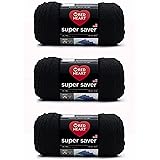
From left: Ketul Patel, Dr. David Herman, Airica Steed
Health system CEOs are dealing with a range of concerns as they navigate staffing shortages, financial pressures and new competitors.
In this first installment of a two-part roundtable series, Ketul Patel, CEO of Tacoma, Washington-based Virginia Mason Franciscan Health and president of Chicago-based CommonSpirit Health’s northwest division; Dr. David Herman, CEO of Duluth, Minnesota-based Essentia Health; and Airica Steed, president and CEO of Cleveland-based MetroHealth Systemdiscuss how their systems are responding to market consolidation and Medicaid redeterminations, among other current issues.
The interviews have been edited for length and clarity. For part two of the roundtable, in which the CEOs discuss forward-looking strategies regarding the workforce and patient care, click here.
What’s your position on hospital mergers, acquisitions or affiliations as you navigate consolidation in your market?
Steed: We are in a very consolidated, integrated market. We recently embarked upon a partnership with Lumina Imaging and Diagnostics to provide low-cost radiology. It helps to address some of the cost pressures, reimbursement pressures and revenue pressures we face, but we would not have been able to do that individually. So creative partnerships are also very important, outside of just the typical mergers and acquisitions.
Herman: We are working with Marshfield Clinic Health System right now and talking about a merger. I think we’re pretty close on that, and we’re excited about that. The mergers that we look for are mission-based mergersrather than scale- or size-based mergers.
How are you responding to moves from new retail and primary care competitors, such as Walgreens and Oak Street Health?
Patel: We have to find a way to partner with them, because they’re going to be here for quite some time. They’re going to make us better for the consumer. We have to react in virtual ways. We have to be able to go to where the patients are and provide what they’re demanding of us.
Related: How retail became healthcare’s biggest disruptor
Steed: We’re approaching our work in very much the same way [as the disruptors]. In 2022, we embarked upon a partnership with the Medical University of South Carolina to create Ovatient, which is a comprehensive, virtual, in-home care delivery model aimed at enhancing the value of healthcare delivery outside of the four walls of traditional healthcare.
Herman: Some of the things that they’re doing are an inspiration to us. If they can do it that way, why can’t we do it that way? One concern we have, if you disaggregate care, is that 40% of our revenue comes from value-based contracts. We want to make sure we maintain those relationships with our patients, because we know those relationships are the basis for keeping them well. We’re working to broaden that telehealth space to be able to get closer to our patients.
Given expense pressures, looming Medicare cuts and ongoing Medicaid redeterminationshow are you adapting your approach to revenue cycle management?
Steed: A key aspect of our mission is to provide high-quality care to everyone in need, regardless of their ability to pay. But we also have to balance that out: no margin, no mission. We have multiple irons in the fire. We are identifying other forms of optimizing revenue through capitation payment models and diversifying our revenue portfolio with non-traditional business streams. Technology’s a factor in being able to optimize our ability to collect more on the front end.
Stay sharp—subscribe to the Daily Finance newsletter.
Herman: We don’t quite know what the impact of Medicaid redeterminations will be on revenue cycle. It’ll [depend on] how many people actually fall off of Medicaid rolls. This isn’t something that we would just delegate to our revenue cycle team. Our revenue cycle team and our clinician partners are working very closely together, watching for the red flags and trying to determine what to do as those things come up.
Note: This article have been indexed to our site. We do not claim legitimacy, ownership or copyright of any of the content above. To see the article at original source Click Here














